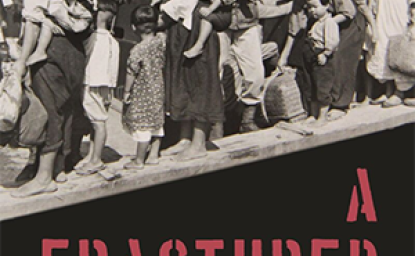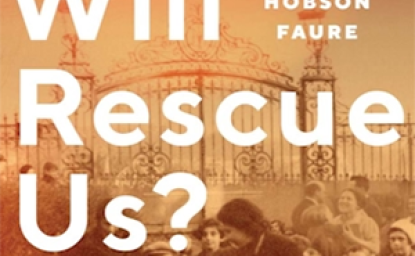141. The Violent Dissolution of Yugoslavia: A Comparative Perspective

Why did the Yugoslav state end? And why was its dismemberment violent? One approach to answering these questions is to compare Yugoslavia with Czechoslovakia and the Soviet Union--the other two states in the region that broke apart following the collapse of Communist Party rule, but significantly did so in a peaceful manner.
During the socialist period, Yugoslavia, the Soviet Union, and Czechoslovakia shared a similar characteristic: a national-federal structure. Just as importantly, this same characteristic also distinguished them from their socialist neighbors. In contrast to the socialist norm of unitary states, these three states featured an additional horizontal tier in their systems: a series of republics (along with some other, less-empowered units in both Yugoslavia and the Soviet Union) situated between the center and the localities. These republics were at once administrative, political, geographical, and national units.
By creating "two-tiered socialism," political leaders in these three national-federal states contributed in important ways (and certainly by accident) to the development over time of nations- and states-in-the-making within the republics. Although pre-socialist historical experiences were crucial for these processes, as were territorially-concentrated cultural groupings, just as essential was the very institutional design of socialist federations. This type of structure, for example, managed to forge the correlation (though hardly perfect) between national and political boundaries; it also created the intricate web of economic, political, social, and cultural institutions that were located within the republics. In addition, as this system aged, it fostered the development of indigenous elites who, through long tenure, declining opportunities for upward mobility, and access to considerable republic-level resources, were in an ideal position to build their own local fiefdoms. All of this, not surprisingly, expanded the potential for conflicts between central and republican party elites over the territorial distribution of power and money.
As socialist economies began to stagnate, as major reforms were discussed if not introduced, and as the center began to weaken to the point of abandoning the republics and their leaders, these earlier conflicts moved quickly and easily to the even more combustible issues of redefining the regime, the nation, and the state.
Thus, just as national-federalism gave republican elites in these systems the capacity to "re-imagine" the nation, the regime, and the state, so the decline of socialism and the struggle over reform seemed to create the opportunity and the incentives for many of these elites to go one step further by embracing nationalism and leaving both the regime and the state in the process. The institutional legacies of socialism (or more specifically, national-federalism) help explain at least three puzzles: why the Soviet Union, Czechoslovakia, and Yugoslavia ended; why all the other states in the region survived; and why the new states that formed in the wreckage of the three socialist federations took on the boundaries they did.
Yet a final question remains unanswered. Institutional similarities can hardly account for the most important contrast in how these three states ended; that is, the violent end of Yugoslavia and the peaceful dissolution of Czechoslovakia and the Soviet Union.
A comparison of these three cases allows one to question some of the most prominent lines of explanation for the tragic end of Yugoslavia. For example, Russia, like Serbia, had a large diaspora community. Yet in contrast to Serbia, Russian political leaders did not use this as a pretext for aggressive action outside the republic. To take a few more examples: the socio-economic and cultural diversity of the Soviet Union was every bit as great as in Yugoslavia; the future of the state in Czechoslovakia, as in Yugoslavia, was in the final analysis decided not by the center but rather by elites in several republics who were fighting for their political survival and who had quite different positions on political and economic liberalization.
What does seem to emerge as crucial, once these three cases are compared, is again the institutional design of socialism--in this case, the institutional differences between Yugoslavia on one hand, and Czechoslovakia and the Soviet Union on the other. In particular during the socialist period, only the Yugoslav federation exhibited extraordinary decentralization, especially following the introduction of the l974 Constitution. Second, the dominant republic within Yugoslavia, Serbia, had the same institutional endowments as the other republics in the Yugoslav system. This was in direct contrast to both the Russian republic within the Soviet Union and the Czech republic within Czechoslovakia, neither of which were allotted their own institutions. Third, while both the Russian and the Czech republics--and Russian and Czech elites--dominated the central-level political and economic institutions and thus the regime, economy, and state during the socialist era, the Serbian republic and Serbian elites did not--and for that matter could not, given the design and structure of representation in Yugoslav political, economic, and social institutions. A final contrast is in the role of the military. Only in Yugoslavia was the national military, with the same domestic mission to protect socialism and the state as in the Soviet Union and Czechoslovakia, used against protesting domestic publics (for example, in Kosovo and Croatia). Moreover, only in socialist Yugoslavia was there a dual military structure, where a national military, the Yugoslav National Army (JNA), existed alongside republic-based militias.
Combined, these differences help explain the contrast between the violent break-up of Yugoslavia and the peaceful dismemberment of Czechoslovakia and the Soviet Union. In particular a long-established tradition of "republicanized" politics, economics, and cultural identities in Yugoslavia created an unusually weak center, while the republics were unusually strong. At the same time, the Yugoslav republics were, not surprisingly, increasingly isolated from each other, and they featured increasingly varied economic and political profiles. They accumulated a long history of conflict with each other due to the institutional design of the system--although this conflict was neither ancient nor usually hateful. Furthermore, throughout the l980s, they locked themselves in a series of protracted stalemates over economic and political reform and ultimately over the future of the regime and the state. In other words, cooperation among the republics against the center, as happened in the Soviet Union, was impossible, just as agreement among the Yugoslav republics to leave the state, as eventually emerged in Czechoslovakia, was equally impossible.
What then translated the Yugoslav stalemate into war among its republics was the engagement of the JNA in the process of state dismemberment, the position of the Serbian leadership in opposing economic and political liberalization, and the break-up of the state along strictly republican lines. Why the Serbian leadership took this position--and why the leaders of the Russian and the Czech republics took the opposite position on both reform and the future of the state--was the mirror-opposite relationship between the political power and the institutional resources of the republic during the socialist period. Simply put, the Serbs were angry at not getting what they saw as their due, and Serbian leaders had significant institutional resources at their disposal to give a clear voice to these resentments. This encouraged the development of a nationalism in Serbia that was expansionist and anti-liberal, both of which placed Serbia on a collision path with Slovenia (and later with the other republics).
By contrast, the combination of political domination and limited institutional resources during the socialist period encouraged Russian and Czech political leaders to define nationalism in liberal terms and to tolerate a break-up of the state, if that were necessary for reform and for maintenance of their political power within the republic. For both Yeltsin and Klaus half a "territorial loaf" was better than none, especially when this allowed them to shed those areas that might undermine their power and their reforms.
Thus, a comparison of the institutional design of Yugoslavia, the Soviet Union, and Czechoslovakia during the socialist era can make more comprehensible not only why these three states dissolved (and others in the region remained intact) but also why they ended differently. This conclusion implies in turn that what followed socialism was vitally affected by the socialist past in general and socialist institutions in particular.
Dr. Bunce spoke at an EES Noon Discussion on October 9, 1997, cosponsored by the Center for Austrian Studies, at the University of Minnesota.
Author
Cornell University

Global Europe Program
The Global Europe Program is focused on Europe’s capabilities, and how it engages on critical global issues. We investigate European approaches to critical global issues. We examine Europe’s relations with Russia and Eurasia, China and the Indo-Pacific, the Middle East and Africa. Our initiatives include “Ukraine in Europe”—an examination of what it will take to make Ukraine’s European future a reality. But we also examine the role of NATO, the European Union and the OSCE, Europe’s energy security, transatlantic trade disputes, and challenges to democracy. The Global Europe Program’s staff, scholars-in-residence, and Global Fellows participate in seminars, policy study groups, and international conferences to provide analytical recommendations to policy makers and the media. Read more




